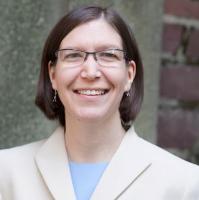Commentary on Zechariah 9:9-12
A specific historical moment for Zechariah 9-14 is challenging to ascertain, though it is surely post-exilic. The superscription in Zechariah 1:1 offers a date of 520-518 BCE, and there is little reason to question it for chapters 1-8, with its references to kings and historical events. Such clear dating markers disappear in chapters 9-14. The visions of restoration are bigger in this second half of the book as it slips beyond the confines of historical clarity. While knowing something of the historical world into which a prophet was speaking often helps with interpreting the prophet’s words in our own time and place, the lack of a firm setting can be freeing as one considers the many moments with which a biblical passage might interact as well as the cyclical way in which the Church often keeps time.
Daughter Zion rejoices
Often the prophets of the Hebrew Bible do prophesy about specific events in the near future, as when Isaiah approaches King Ahaz about the appropriate role for Judah to play in the Syro-Ephraimatic war (Isaiah 7) or when Jeremiah prophesies about Babylon’s imminent rule over Jerusalem (Jeremiah 20). Zechariah 9:9-12, rather, envisions a future time when a powerful king will bring victory to Israel and Judah. This is something that cannot be placed on a historical timeline. Instead, Zechariah offers a prophetic vision that might be better thought of as a vision statement—a general statement of God’s desired future—than an indication of a particular event.
Verse 9 opens with a call for Daughter Zion to rejoice! Zion, also named Jerusalem in the next line, is personified here as a daughter. In other prophetic books and in the book of Lamentations, Jerusalem is often personified as a way of building empathy for the city in the face of destruction or to announce future possibility and growth. In Jeremiah, for instance, Daughter Zion gasps for breath like a laboring woman as she faces an impending army (Jeremiah 4:31). In Isaiah 51, the city is again personified, but this time the metaphor of woman emphasizes future fertility and the growth of a nation. Surely she ought to rejoice! In Zechariah 9, too, Daughter Zion rejoices that her children will live in the peace ushered in by a victorious king.
What kind of ruler?
Another aspect of personifying the city of Jerusalem as daughter is that social roles between parent, in this case likely a father, and daughter come into play. While these roles are not static, a basic expectation would be for a father to provide sustenance, shelter, and protection. In these verses, though, God is described not primarily as father but as king, a type of symbolic father whose role also includes provision of sustenance, shelter, and protection for a people. The role of protector is particularly emphasized here as the king enters triumphant and victorious, an apt description following the military campaign described in verses 1-8.
This image of the king entering the city on a donkey rather than a warhorse emphasizes the end of war, at least momentarily. There is no need for the warhorse, the foal of a donkey will serve the king fine for the peaceful reign that this royal entrance inaugurates. In verse 10 territorial boundaries expand, first to Ephraim (Israel) and then world-wide.
While not the gospel reading for this Sunday in the season after Pentecost, Zechariah 9:9-12 is most recognizably picked up in the triumphant entrance of Jesus in the gospels (Mattew 21:5; John 12:15, see also Mark 11:3; Luke 19:30). There, meanings of victory, peace, and worldly power are reimagined and a moment of hopeful peace is surrounded by battle scenes (Zechariah 9:1-8, 13-15), suggesting that this vision is not yet reality and yet exists in the world of sure and certain hope.
Prisoners of hope
Several images in verses 11-12 speak to the identity of Daughter Zion. First, the “blood of my covenant with you” (feminine singular) hearkens back to Exodus 24:1-8, where as part of the covenant sealing ceremony at Sinai, Moses dashed blood from the offerings of well-being over the people as a symbol of their connectedness and ongoing relationship. Daughter Zion receives these words from Zechariah as an heir of covenantal relationship. The second half of that line proclaims freedom to Daughter Zion’s prisoners, likely a reference to the peoples’ exilic past.
More importantly, the prophet bids, “Return to your strongholds,” to a safe place, presumably Mount Zion, the city of Jerusalem (verse 10). The image of prisoners is turned on its head as the prophet declares that the people would return as prisoners not of an enemy conqueror but as ones who cannot help but hope in a coming, God-given restoration. This is the one time in the passage that the prophet uses a plural address and speaks to the people as a whole rather than personified as Zion. On the one hand, this makes logical sense because Zion herself is the stronghold. More than that, this change in perspective, hard to recognize in English, also offers an opportunity for readers and hearers to find themselves within the text and to claim their own role as a prisoner of hope.
While the images of donkey and warhorse might need some modernization, the call to hope in a God-given vision of peace and security speaks clearly to a world beset by violence of all sorts. What type of ruler—what type of God—is it who calls us to rejoice with Zion? What type of ruler—what type of God—is it who calls us in such a way that we cannot help but hope?


July 9, 2023